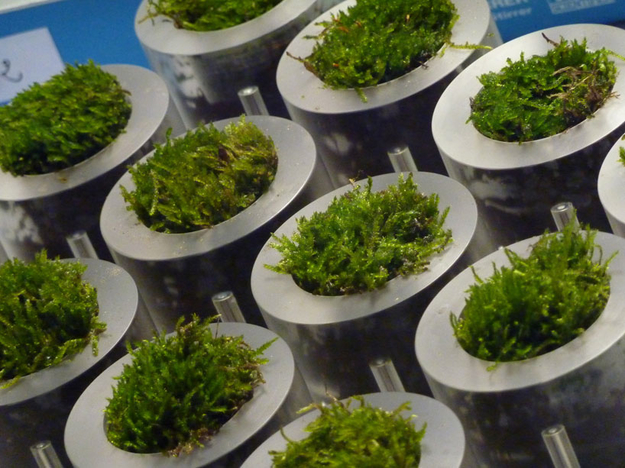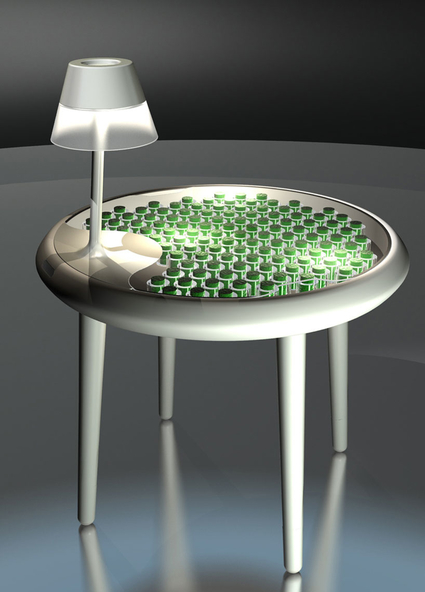What is the Moss Table?
The Moss Table is a concept product which demonstrates a potential future application of BPV technology.
What is BPV?
BPV stands for Bio-Photo-Voltaic. BPV devices generate electricity from light energy by exploiting the photosynthesis of living organisms such as cyanobacteria, moss, algae and vascular plants.
What does the Moss Table do?
The table incorporates an array of BPV devices which generate electricity. At present the energy generated by the table is not used to power anything. Instead an animation has been created which responds to the current output of the table. In this way people can ‘see’ the energy produced by the table as seen in this video:
How much energy is produced by the Moss Table?
Currently the table can produce about 520 Joules (J) of energy per day. A typical laptop requires about 25J per second, so in a day the table would produce enough energy to power a laptop for just 20 seconds!
How does the Moss Table work?
Photosynthesis is a process by which plants and algae convert carbon dioxide from the atmosphere into organic compounds using energy from sunlight. The plants use these organic compounds (like carbohydrates, proteins and lipids) to grow. When the moss photosynthesises it releases some of these organic compounds into the soil, which contains bacteria. The bacteria break down these organic compounds, which they need to survive, liberating by-products that include electrons. These electrons are captured by conductive fibres inside the Moss Table and put to use. In this way the devices harness energy which would otherwise be wasted. This is achieved using an array of 112 ‘moss pots’, which are bio-electrochemical devices. This means that they convert chemical energy into electrical energy using biological material. Each one generates a potential of about 0.4-0.6 volts (V) and a current of 5-10 microamps (µA).
Authorship of the table to Designers Alex Driver and Carlos Peralta, together with scientist Paolo Bombelli, all of them from Cambridge University.
You can see related BPV designs on Designboom

